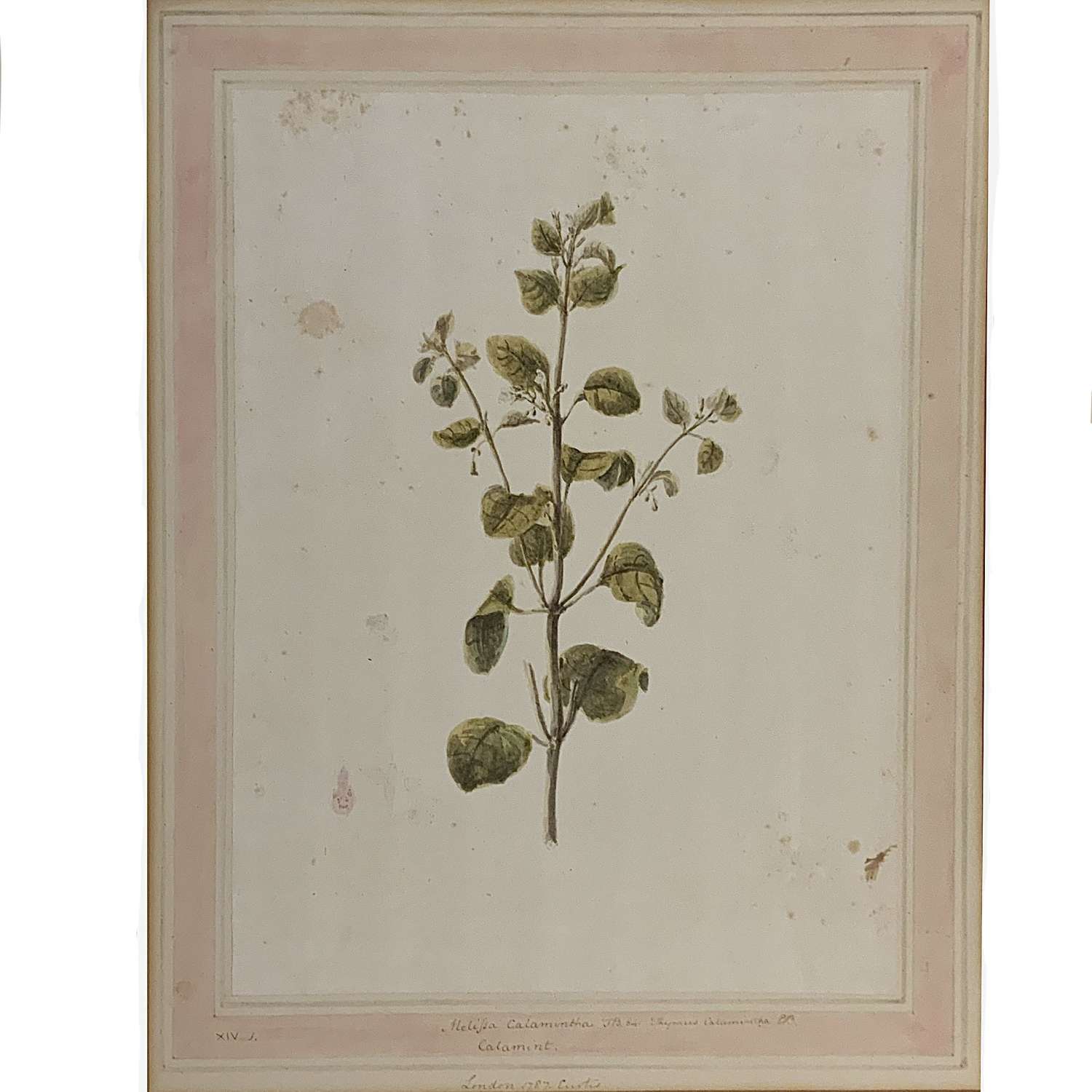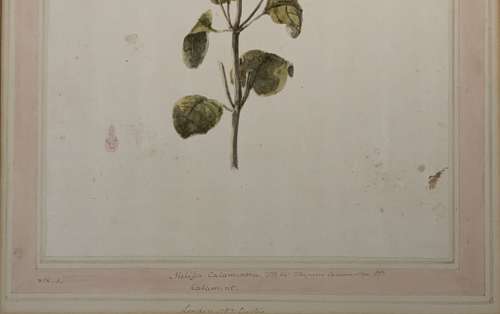
Code: 11033
Dimensions:
Louisa Finch, Countess of Aylesford (née Thynne) (1760–1832)
"Melissa Calamintha", 1787
Watercolour with artist's original washline mount
On laid paper
39.2 cm x 30 cm
Provenance:-
Presumably one of the drawings which within a set of twenty-seven volumes of botanical illustrations, prepared by Lady Aylesford and sold as part of the Aylesford's Library from Packington Hall, Warwickshire at Christie's on 6 March 1888.
With Abbot & Holder, Museum Street, London, 1978
Private collection, London, U.K.
Lot 30 (part lot) Christie's, London, 25 January 1996, British & Continental Watercolours & Drawings, as "English School"
Private collection, Oxfordshire, U.K.
A watercolour drawing of 'Melissa Calamintha' annotated beneath:
"XIV 1. Milifsa Calamintha TB.641 Thymus Calamintha EB. / Calamint. / London 1787. Curtis"
The reference to "London 1787. Curtis" is almost certainly a reference to the specimen, which Lady Aylesford has drawn here, having originated from William Curtis (1746-1799) at his "London Botanic Garden" at Lambeth Marsh. Curtis was a distinguished plantsman and botanist who began publishing 'The Botanical Magazine' in 1787 (coincidentally, the same year as this drawing here). This watercolour therefore provides a fascinating insight into interactions between artists, botanists and plantsmen in the late 18th Century.
Louisa Finch, Countess of Aylesford (1760–1832) was born at Longleat in Wiltshire, the eldest daughter of Thomas Thynne, 1st Marquess of Bath. She married Heneage Finch, 4th Earl of Aylesford in 1781. Between 1784 and 1799 she gave birth to thirteen children. It is remarkable that, despite the demands placed upon her by motherhood, she was able to find time to pursue her interests in the natural world and botanical illustration. Her drawings are made with a scientific accuracy and the majority are methodically annotated with the taxonomic details of the plants depicted, whereabouts the specimen's originated and the date they were painted. The numbers sometimes refer to a work published by William Withering (1741-1799) who used a Linnean binomial system of the identification of plants and put forward a systematic arrangement of the native plants of Great Britain.
Two albums of botanical drawings by the Countess of Aylesford are known to have been broken up and dispersed in 1973. Some of the illustrations in those volumes ended up with Abbot & Holder of Museum Street, London, the drawing here was certainly with them by 1978.
A very similarly prepared drawing is held by the British Museum [1978,0415.6]. The example here is numbered XIV 1. and dated 1787. The British Museum drawing (a specimen of 'Touch me not' taken from the gardens of Packington Hall) is annoted XIX.6. and dated July 30 1792.
